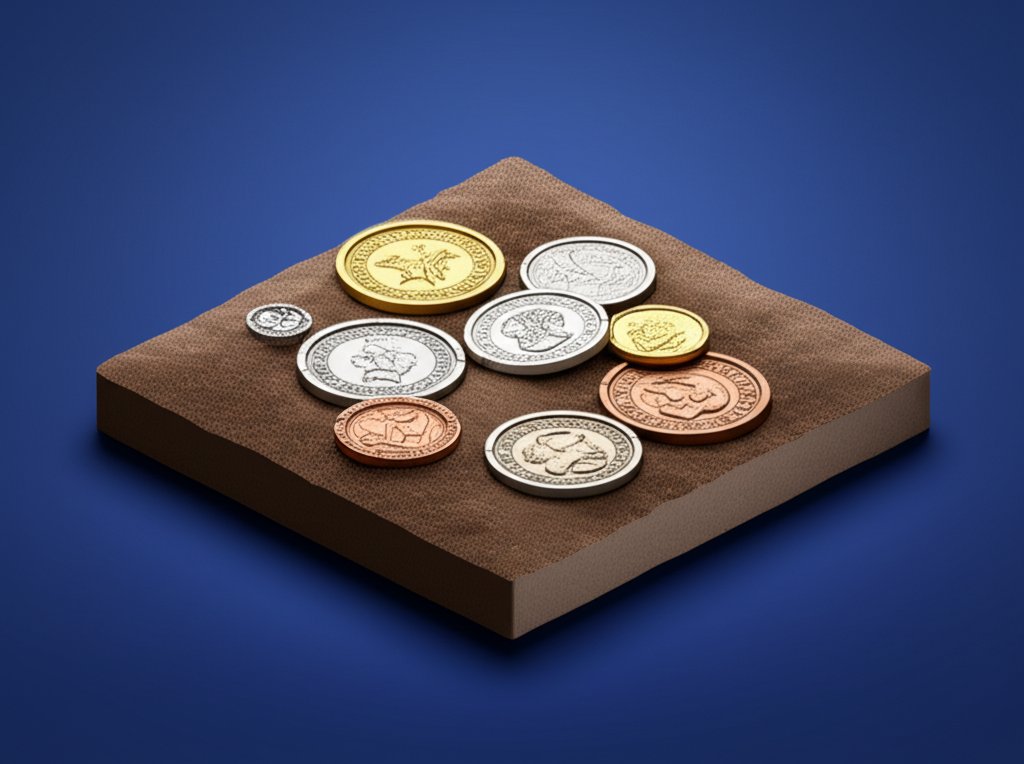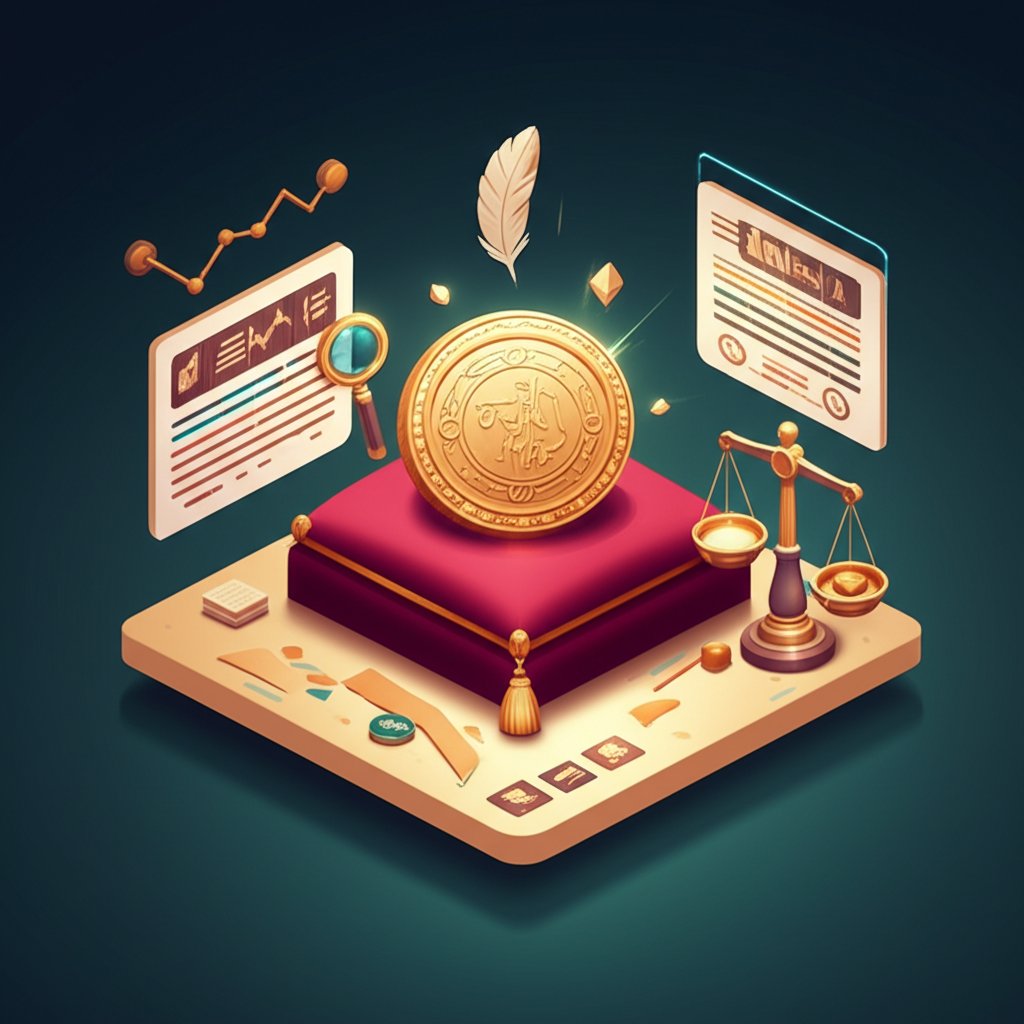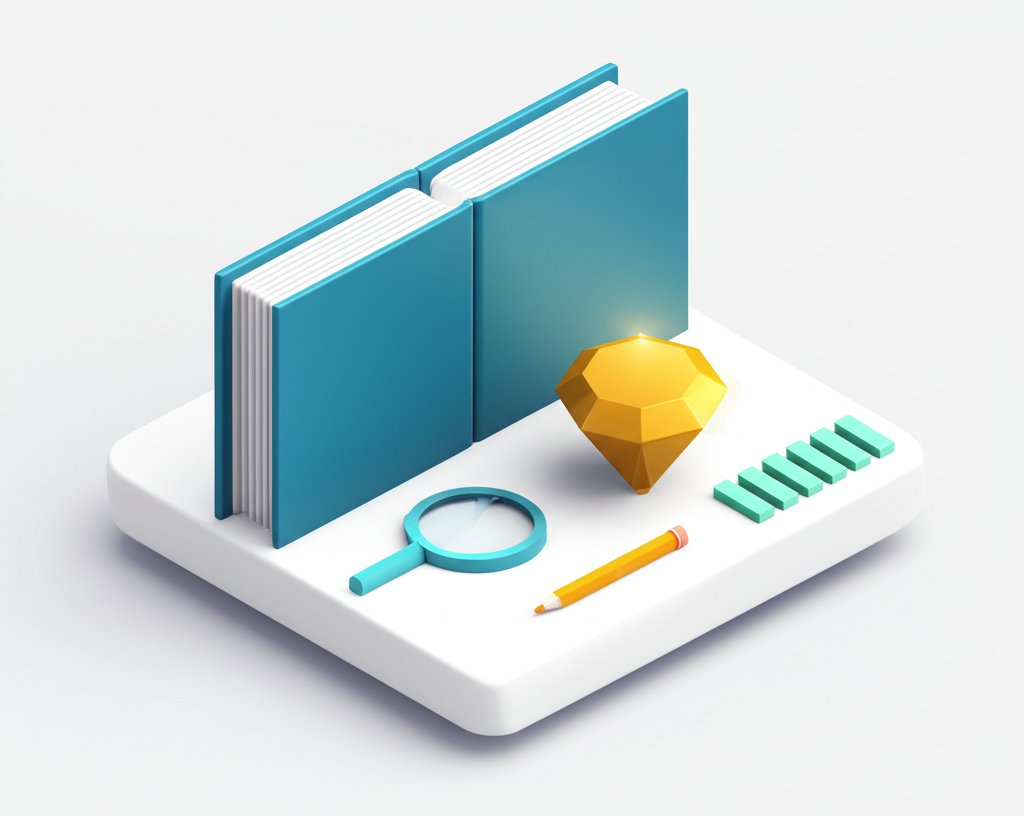
The thrill of discovering a forgotten treasure is real, especially when it comes to identifying genuinely valuable world coins worth money hidden within an old collection. What might look like just another piece of metal could, with the right knowledge, be a piece of history valued at thousands, or even millions, of dollars. It’s a journey into numismatics, the study and collection of currency, that offers not just potential financial reward but also a fascinating window into global history and culture.
At a Glance: What You'll Discover
- Key Value Drivers: Learn the specific factors that elevate a coin from common currency to a rare collectible.
- Practical Identification Steps: A clear process to evaluate your coins for potential hidden value.
- The Power of Condition: Why a coin's state of preservation often matters more than its age.
- Understanding Rarity: How mintage numbers and survival rates dictate scarcity.
- When to Seek Professional Help: The crucial role of expert grading and authentication.
- Real-World Examples: Glimpses into some of the most valuable coins ever found.
Beyond Pocket Change: What Makes a Coin Truly Valuable?

Not every old coin holds significant value, and certainly, not all international coins become sought-after treasures. The true worth of a coin hinges on a specific set of characteristics, much like real estate or fine art. Understanding these factors is the first step in uncovering world coins worth money in your own collection.
Condition is King: The Grading Imperative
The physical state of a coin is arguably the single most important determinant of its value. A coin in "excellent condition" will always fetch significantly more than one that is worn, scratched, or damaged. Professional grading services assign a numerical grade (e.g., MS-70 for Mint State Perfect, or AU-58 for About Uncirculated) and encapsulate the coin, providing an authenticated and universally recognized assessment of its condition. This process removes subjectivity and offers buyers confidence, directly impacting market price. Even a small imperfection can dramatically reduce value, underscoring why handling coins properly is paramount.
Rarity and Mintage: Scarcity Drives Demand
Simply put, the fewer there are of something, the more valuable it tends to be. For coins, rarity is primarily determined by two factors:
- Mintage: The total number of coins originally produced by the mint. A low mintage figure immediately signals potential rarity.
- Survival Rate: How many of those original coins have survived to the present day, especially in good condition. Wars, melting for metal content, or simply being lost to time can drastically reduce the number of extant examples.
A coin like the 1930 Australian Penny, for example, is valued around $1.1 million precisely because of its incredibly low mintage and scarcity.
Historical & Cultural Significance: Stories in Metal
Some coins transcend their metallic value due to the historical context they represent. A coin struck during a pivotal moment in history, commemorating a significant event, or issued by a short-lived regime can carry immense historical premium. The 723 Umayyad Gold Dinar, valued around $6 million, is a prime example; its unique geographic reference ties it directly to an important early Islamic Caliphate, making it a tangible link to a rich historical period. Collectors often seek these pieces not just for their monetary value, but for the stories they tell and the connection they offer to the past.
Mint Errors: The "Happy Accidents"
Mistakes made during the coin manufacturing process, known as "mint errors," can paradoxically increase a coin's value. These aren't common production flaws but rather distinct anomalies like:
- Off-center strikes: The design isn't perfectly centered.
- Doubled dies: The design appears slightly duplicated or fuzzy.
- Missing elements: A portion of the design is absent.
- Wrong planchet: A coin struck on a blank intended for a different denomination or metal, such as the famous 1943 Copper Penny, which can be worth up to $1.7 million because it was mistakenly struck on a bronze planchet instead of steel.
These errors are rare and often highly sought after by collectors who specialize in unique oddities.
Precious Metal Content: Intrinsic Worth
For many older or larger coins, a significant portion of their value can come from the sheer amount of gold or silver they contain. Coins like the Canadian 2007 C$1 Million Gold Maple Leaf are primarily valued for their intrinsic metal content, which can be well over $4 million, far outweighing their numismatic premium in some cases. Even a smaller gold sovereign from India (e.g., 1918, ~$700,000) holds substantial value due to its gold purity and weight. While numismatic value often surpasses melt value for truly rare pieces, the precious metal content provides a floor for a coin's worth, especially for those less rare but still significant.
Market Demand & Trends: Collector Appetite
Ultimately, a coin is only worth what a collector is willing to pay. Market demand, influenced by current collecting trends, economic conditions, and even specific anniversaries, plays a crucial role. A coin with all the aforementioned positive attributes might still fluctuate in value based on how many collectors are actively pursuing that particular type of coin at any given time. Staying informed about auction results and collector guides (like those published annually) helps gauge current market interest.
Your Practical Playbook for Identifying Value

Now that you understand what makes world coins worth money, let's look at a practical approach to assessing your own collection. This isn't about instant millions, but about methodical evaluation.
Initial Inspection: The First Look
Before anything else, take a careful, hands-off look at your coins.
- Never Clean a Coin: This is the golden rule of numismatics. Cleaning, polishing, or even wiping a coin can cause microscopic damage that drastically reduces its value, often by 50% or more. Patina (the natural discoloration that forms on metal over time) is often desirable and cleaning removes it irreversibly.
- Use Soft Gloves: Handle coins by their edges only, ideally with soft cotton or nitrile gloves, to prevent transferring oils from your skin, which can cause permanent damage.
- Identify Key Information:
- Date: The year the coin was minted.
- Mint Mark: A small letter (or sometimes a symbol) indicating where the coin was produced (e.g., "S" for San Francisco, "D" for Denver, "P" for Philadelphia, or a symbol for international mints). Not all coins have mint marks, but their presence or absence can be crucial for rarity.
- Denomination: The face value (e.g., 1 cent, 5 dollars, 1 pound).
- Country of Origin: Often evident from the language, imagery, or specific national symbols.
- Obvious Damage: Note any deep scratches, dents, or signs of having been in jewelry (e.g., soldered edges).
Researching Potential Finds: Becoming an Informed Explorer
Once you have the basic information, it's time to dig deeper.
- Online Databases & Guides: Websites and digital catalogs dedicated to coins (e.g., Numista, PCGS, NGC, reputable auction house archives) are invaluable. Search by country, denomination, and date.
- Collector's Guides: Annual print guides (like the "Red Book" for US coins or similar international guides) provide mintage figures, historical context, and estimated values for various grades. Remember that values are estimates and can fluctuate.
- Auction Records: Reviewing past auction results gives you a realistic sense of what specific coins (in specific conditions) have actually sold for. Sites like Heritage Auctions, Stacks and Bowers, and Sotheby's often have searchable archives.
Considering Professional Grading: When to Call in the Experts
For any coin you suspect might have significant value (generally over a few hundred dollars), professional grading is a critical step. Services like PCGS (Professional Coin Grading Service) and NGC (Numismatic Guaranty Company) are the industry standards.
- Authentication: They verify the coin is genuine and not a counterfeit.
- Condition Assessment: They assign a precise, objective grade.
- Encapsulation: The coin is sealed in a protective slab, preserving its condition and grade.
This professional endorsement significantly enhances a coin's marketability and ensures its value is recognized globally. For a broader perspective on how to approach this, including an understanding of foundational numismatic principles, you might find our main guide helpful: Identify valuable international coins. It provides a comprehensive framework for recognizing and evaluating international numismatic treasures.
Safeguarding Your Discoveries: Proper Storage
Once you've identified potentially valuable coins, proper storage is non-negotiable.
- Archival-Safe Holders: Use inert plastic flips (Mylar or polypropylene, never PVC which degrades over time and damages coins) or rigid plastic "slabs" for individual coins. For graded coins, keep them in their encapsulated holders.
- Albums/Trays: Store holders in dedicated coin albums or trays designed for numismatic use.
- Stable Environment: Keep coins away from extreme temperature fluctuations, humidity, direct sunlight, and household chemicals. A cool, dry, dark place is ideal. A fireproof safe is recommended for high-value items.
Spotlight on High-Value World Coins: What to Look For
While you won't likely stumble upon a 1933 Double Eagle (which sold for a staggering $18.9 million in 2021) in your attic, knowing what makes these coins valuable can help you recognize traits in lesser-known pieces. These top-tier examples illustrate the confluence of extreme rarity, historical significance, and pristine condition.
- The 1343 Edward III Florin (England): Valued around $6.8 million, this coin from medieval England is known as one of only three examples surviving from its era. Its incredible age and extreme scarcity make it a truly legendary piece.
- The 1787 Brasher Doubloon (US): This early American gold coin, worth over $9 million, is famous for being one of the first gold coins struck in the newly independent United States by a private goldsmith, Ephraim Brasher. Its historical significance and low mintage are paramount.
- The 723 Umayyad Gold Dinar (Islamic Caliphate): With a value around $6 million, this coin stands out for its unique inscriptions, specifically mentioning a location in present-day Saudi Arabia, tying it directly to early Islamic history and oil discoveries.
- The 1913 Liberty Head Nickel (US): One of only five known examples, this coin's clandestine production and rarity give it a value exceeding $5 million. It was never officially issued for circulation but mysteriously surfaced.
- The 1911 Chinese Silver Long Whisker Dragon Dollar: Valued at over $1 million, this coin represents a period of significant political transition in China, featuring a distinctive dragon design and being exceedingly rare in high grades.
- The 1936 Edward VIII Gold Proof Sovereign (England): Worth $1 million, this coin was minted for a king who famously abdicated before most coins could be released, making surviving examples incredibly rare and historically poignant.
These examples, both American and international, highlight that the most valuable coins often possess a combination of extreme scarcity (low mintage/survival), an interesting story (historical significance/errors), and outstanding condition. Always look for these tell-tale signs.
Navigating the Numismatic Market: Tips for Aspiring Collectors
Collecting world coins worth money can be a rewarding endeavor, but it requires a strategic approach to avoid pitfalls and maximize your enjoyment and potential returns.
Education is Power
Continually educate yourself about numismatics. Understand grading standards, historical contexts, and market dynamics. Read books, subscribe to numismatic publications, and study auction catalogs. The more you know, the better equipped you'll be to make informed decisions and spot genuine opportunities. Knowledge protects you from misinformation and poor investments.
Trusted Sources are Essential
Always buy and sell coins through reputable channels.
- Authorized Dealers: Look for dealers who are members of professional numismatic organizations (e.g., ANA in the US, or international equivalents). They have reputations to uphold.
- Established Auction Houses: Major auction houses (like those mentioned earlier) have stringent authentication processes and provide detailed provenance for their lots.
- Numismatic Shows: These events bring together many dealers and offer opportunities to examine coins in person and get expert opinions.
Avoid unverified online sellers or flea market finds unless you are an expert capable of authenticating coins yourself.
Join a Community
Connect with other collectors. Local coin clubs, online forums, and national numismatic associations are excellent resources for sharing knowledge, getting advice, and staying informed about market trends. Experienced collectors are often willing to mentor newcomers and help them avoid common mistakes. This community aspect is a significant part of the hobby's appeal.
Understanding Fluctuations
Remember that coin values are not static. They are "estimates based on public auction records and collector guides as of 2025" and "can fluctuate significantly." Economic downturns, shifts in collector interest, and even the discovery of a new trove of previously rare coins can impact prices. A long-term perspective is advisable, and always understand that like any collectible, there's no guaranteed return on investment.
Quick Answers to Common Questions
Collectors often have similar initial questions about their coins. Here are some rapid-fire answers to clear up common misconceptions.
Q: Do all old coins have significant value?
A: No. While age can contribute to historical significance, rarity and condition are often far more important. Millions of very old, common coins exist and hold little numismatic value beyond their metal content.
Q: How do I know if a coin has a mint error?
A: Mint errors are distinct and often visually obvious, such as a double image, off-center strike, or unusual metal. Research specific error types for your coin's country and date. When in doubt, consult an expert or compare it to known examples.
Q: Should I clean my coins to make them look better?
A: Absolutely not, under any circumstances. Cleaning coins, even gently, will almost always reduce their value significantly by altering their original surface and removing desirable patina. Leave cleaning to specialized conservators, if it's ever deemed necessary (which is rare for numismatic value).
Q: What exactly is numismatics?
A: Numismatics is the study or collection of currency, including coins, tokens, paper money, and related objects. It's a hobby that offers deep insights into history, art, economics, and metallurgy.
Your Next Steps to Uncover Hidden Gems
Uncovering world coins worth money in your collection is a journey of careful observation, informed research, and patient investigation. Start by systematically examining your coins, identifying key details, and then using online resources and collector guides to research their potential rarity and historical context. For any coin you believe might be genuinely valuable, the next crucial step is always to seek professional grading and authentication.
Remember, the greatest treasures are often found when you combine curiosity with a commitment to education and careful handling. Even if you don't discover a multi-million-dollar rarity, the knowledge and appreciation for history you gain will be a valuable collection in itself. Happy hunting!